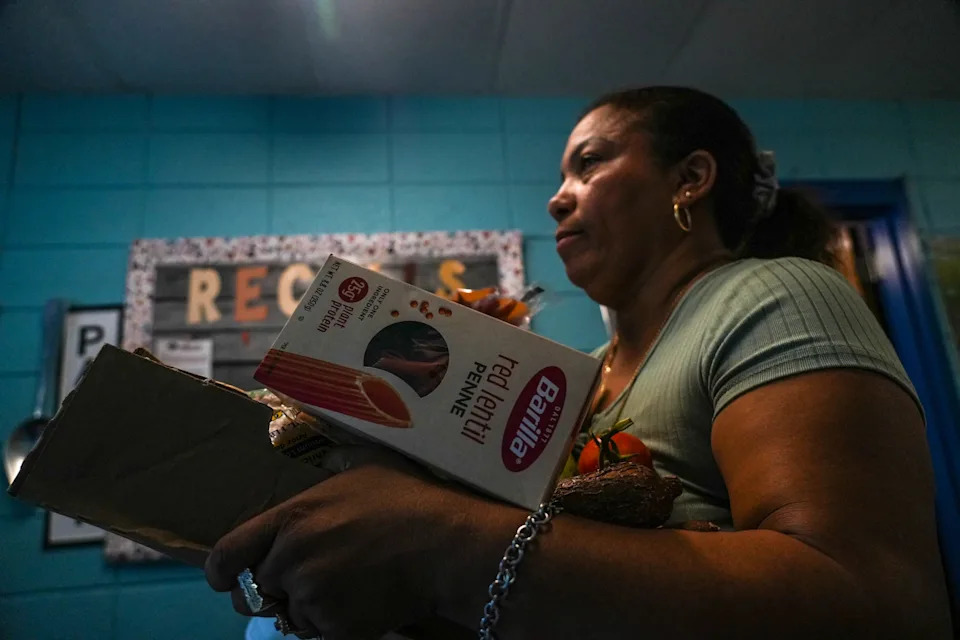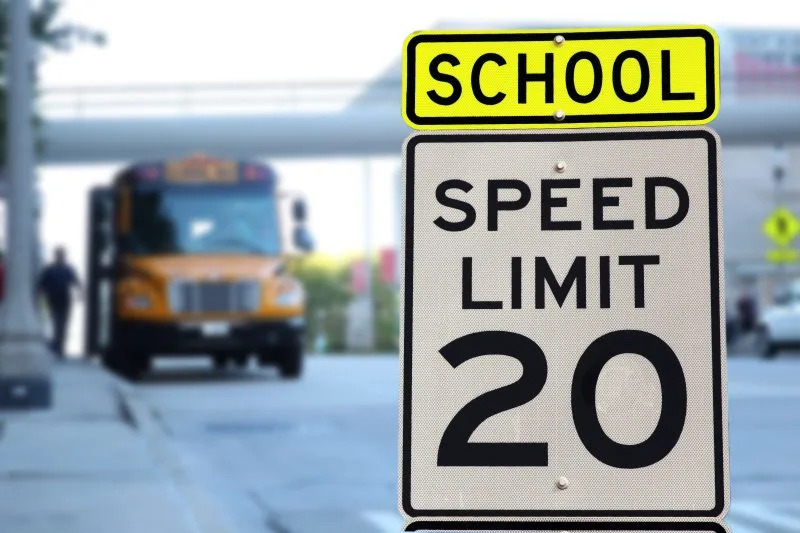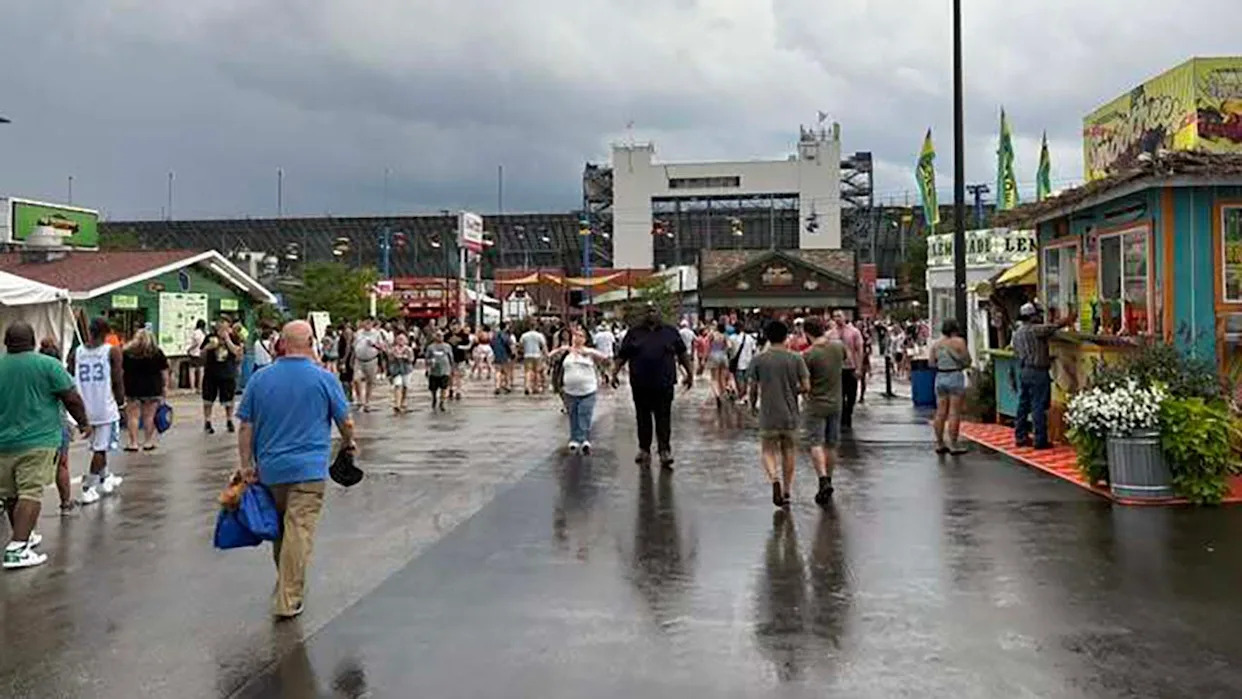PROVIDENCE – It is 10 a.m. on a Wednesday, and there is a line outside the West End Community Center’s pantry.
“Is 38 here?” calls Olivia Martinez, the center’s program director.
No one raises their hand, so Martinez moves on to other numbers: 39, 40, 41.
Felicia Vicioso sits on a bench as she waits her turn in line – number 42. She says she has been coming to the center’s pantry for a long time and appreciates its work.
“It’s a good system,” Vicioso says. “Because there are many people who don’t have the resources to feed themselves.”
Before Vicioso can answer more questions, her number is called, and she heads inside the center, where in a room lined with shelves and refrigerators she will fill a box with food items such as canned goods, fresh produce and meats.
The center is used to serving about 2,700 families and seniors monthly, but lately demand has increased, says Denise Greene, its executive director.
“This waiting line? That’s a lot of people sitting out there waiting for food. And that line is not going anywhere,” Greene says.
The center serves about 40 to 50 new families a month, but in June that number more than doubled to nearly 140.
It’s not the only one seeing a rise in hunger. The Jonnycake Center in South Kingstown, which runs, among other services, a pantry, saw an 85% increase in pantry visits between 2022 and 2024, according to CEO Kate Brewster.
Rhode Island is in the grips of a hunger wave, and with federal cuts coming to food assistance programs, the state’s food bank and pantries are bracing for a rise in demand they may struggle to meet.
'A perfect storm' situation for food bank
“We are in a bit of a perfect storm situation right now,” said Kate MacDonald, director of communications for the Rhode Island Community Food Bank, which coordinates with 147 agencies and food pantries across the state to deliver food.
The food bank has seen a record increase in demand. In 2022 – during the COVID-19 pandemic – it was providing food for about 58,000 households monthly. This year, that number ballooned to around 89,000.

Survey data also paints a bleak picture. In 2021, the percentage of Rhode Island households experiencing food insecurity – defined as “lack of consistent access to enough food for an active, healthy life” – dipped to 18%, according to an annual survey by Blue Cross & Blue Shield of Rhode Island and Brown University School of Public Health.
In 2024’s survey, 38% of Rhode Island households reported being food insecure.
Rhode Island’s perfect hunger storm is the convergence of several factors, MacDonald said.
One of them is inflation. The pandemic caused food prices to skyrocket. In 2022 alone, they increased by nearly 10%, the fastest rise since 1979, according to the U.S. Department of Agriculture. Since then, prices have cooled down, though they have continued to rise. At the same time, the costs of housing, utilities and health care have continued to grow.
The halting of pandemic-era benefits such as child tax credits and food assistance programs put an additional strain on many families and led to a rise in food insecurity in the state.
More recently, cuts in federal funding have reduced the aid the food bank depends on. Earlier this year, the food bank had $2 million worth of federal commodities canceled, according to MacDonald.
“They were loaded onto trucks, and the truckloads were completely canceled. What happened to that food, we're not sure, but it's food that we didn't get,” she said.
The federal budget reconciliation bill, also known as the “One Big Beautiful Bill Act,” will bring further cuts to aid. An estimated 144,000 Rhode Islanders will lose some form of SNAP benefits, according to the Center for Budget and Policy Priorities. More than two-thirds of SNAP recipients are children, the elderly or people with disabilities.
The bill shifts much of the cost of providing social benefits, such as SNAP and Medicaid, to the state. Keeping everyone currently enrolled in SNAP will cost Rhode Island around $68 million, according to Nina Harrison, policy director of The Economic Progress Institute.
“Ultimately, it’s going to create more need and strain on an already stretched hunger relief network,” MacDonald said of the bill’s effect.
Greene, from the West End Community Center, worries just as much about how the cuts will affect her ability to staff the center.
“When you cut my funding, I've got to let someone go. At the same time, my need is growing,” she said.
The line outside the center got longer. By 10:31 a.m., 53 people had picked up a number to enter the pantry. It didn’t look like it would be letting up anytime soon.
This article originally appeared on The Providence Journal: Hunger is on the rise in RI; food pantries see increased need








Comments